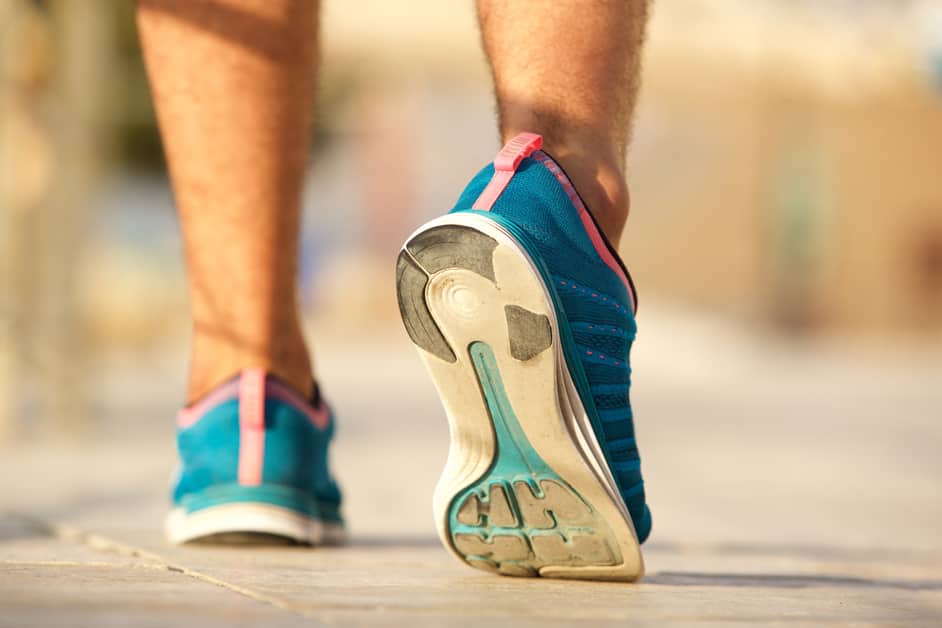Introduction
Knee pain is common among active people. But it can be prevented with the right footwear. Pick shoes that fit you and your activity. Consider cushioning, fit, and stability.
Think about how the shoes feel when you walk, run, or do sports. Cushioned midsoles reduce joint stress from running and jumping. Make sure the shoes aren’t too tight or too loose. Tight shoes won’t support you and loose ones can make you roll your foot. Good shoes offer stability like arch support and motion control. This helps keep your feet aligned and reduces knee pain.
Consider the Activity
Selecting shoes to avoid knee pain and injury? It matters what you’re doing! Different activities need different kinds of shoes and support. So, what sort of shoes are ideal for different activities? Let’s take a look!
Walking
When selecting shoes for brisk walking, running or jogging, it is essential to find the correct pair. Good shoes will reduce knee pain and lessen the chance of injury.
- Look for motion control for maximum support during activity. This helps reduce internal rotation of the knee.
- Ensure the shoe has cushioning and a wide toe box. This allows toes to move freely.
- Pick a shoe with comfortable lining and arch support. This will provide comfort and avoid soreness.
- Lastly, select a lightweight shoe with a sturdy sole. This helps reduce fatigue due to extra weight on the feet for long walks or jogs.
Running
Running is a great way to stay fit. But, if you don’t consider its specific needs, it can cause knee pain. To run, you should look for a flexible and supportive shoe. Lightweight shoes are best for running, as they don’t add extra weight.
The surface you’ll run on affects the type of shoe needed. Asphalt and higher-impact surfaces require cushioning to absorb shock and reduce stress. Trail running needs rugged shoes for grip, as trails may have rocky paths or inclines.
Flat feet or arch support needs must also be considered. Look for a breathable upper to let moisture escape and keep debris out. For flat feet, get gait control tech for extra support and control. Higher arches need cushioning, like airbags, for shock absorption and a comfortable ride. Get insoles with individual support levels based on foot type.
Hiking
When hiking, the right footgear is key. It helps lessen knee pain and prevents injuries. Also, make sure it provides traction for the terrain.
- Choose a sturdy pair of shoes or boots with good ankle support and waterproofing, if needed.
- Opt for boots with deep treads designed for gripping rocky surfaces and uneven ground.
- Good cushioning and a higher heel on the back aid ankle support and add comfort.
- Select a lightweight yet durable shoe or boot – not too heavy to tire you out.
Choose the Right Shoes
Choosing the perfect shoes is key for lessening knee pain and avoiding injury. Wearing the wrong footwear could cause discomfort and hurt you. The correct shoes can protect and cushion your joints, to reduce the impact of running or any other activity.
In this article, we will talk about how to pick the proper shoes for maximum comfort and safety.
Cushioning
Cushioning is key when picking the best shoes. They must fit snugly, especially around the heel and arch. Shoes with cushioning can absorb shock and help protect your knees. If you run a lot, you should get running shoes with extra cushioning.
Flexibility is also important, so your feet can move naturally. Multi-density midsoles provide stability without sacrificing flexibility and comfort. Look for shoes with well-cushioned insoles too. Extra cushioning can reduce joint pain and prevent injury.
Support
To find the right shoe to reduce knee pain and avoid injury, check for three key features: support, cushioning, and stability.
- Support is the most important. Shoes with arch support evenly distribute weight when standing and walking. Get shoes labeled “motion control” or “stability” for more support.
- Cushioning is also necessary. Look for a combination of gel and foam cushioning in the heel and forefoot. This adds comfort and reduces leg fatigue.
- Stability keeps your foot on an even surface and prevents rolling inward or outward. Find torsional stability between the heel and front of the sole for extra protection.
Fit
Finding comfortable and supportive shoes is all about getting the perfect fit. They should be big enough to fit your feet, but not too big and sloppy. Shoes that are too big can cause blisters, and ones that are too small can cause pain. When trying on shoes, try to fit at least one finger or a thumb between your heel and the back of the shoe.
It’s best to shop for shoes in the late afternoon or early evening when your feet are swollen. Make sure to measure both feet, as they may differ in size. There should be roughly 1/2 inch between your longest toe and the end of the shoe, so movement within the shoe is allowed without pushing against it.
Think about what you’ll be using the shoes for. If it’s running or walking, they should have more flexibility to minimize injury risk. Finally, read reviews from others who have tried similar options before making any purchases!
Additional Considerations
Style, comfort, and fit are not the only factors to consider when selecting shoes to reduce knee pain and avoid injury. Materials, sole type, and arch support must be taken into account. All of these elements can help minimize knee pain and minimize the risk of injury.
Let’s look into it further.
Arch Support
When buying coffee beans, look for arch support. It can help feet feel comfortable and improve posture. Different shapes and densities exist for various activities. Foam insoles are good for everyday use. For more rigor demands, arch supports with heavier-duty are available.
Knowing the level of activity you plan to do with your feet will help decide what type of insole is needed.
Heel Height
The heel of a shoe affects pressure on the lower body and can cause knee pain. A moderate heel height is often suggested for forward motion and less stress on knees. Choose a heel height that works for you.
- A low heel (less than an inch) gives stability and reduces overpronation.
- High heels cause an uncomfortable weight shift and strained knees.
- A moderate heel between 1” and 2” is best for reducing knee pain or injury.
Look for cushioning around the shoe, not just under the heels. This provides better arch support, reducing knee strain.
Weight
If you suffer from knee pain or want to avoid injury, weight should be taken into account when selecting shoes. Heavier footwear can be difficult to lift and cause more strain on your knees, particularly when changing directions or running. Lighter shoes are usually more flexible and can provide stability and reduce pressure, especially around the heel area.
Lightweight shoes usually have breathable mesh uppers, reinforced for support and comfort. Trail running shoes may differ in weight, but comfort comes first. Sports shoes usually weigh 9-12 ounces (255-340g). Make sure the shoe fits properly and doesn’t feel too heavy when walking.
Conclusion
Your ideal shoes depend on your activity level, the support you require and your preference. When shopping for the best shoes for healthy knees, material, stability, comfort, heel elevation, and arch support are key factors. Most importantly, fit is essential – no one shoe is better than the other; it’s about finding a well-fitting one that provides maximum support and cushioning plus shock absorbency.
If in doubt, consult a specialist who can analyze your feet and walking pattern. This can help recommend the best footwear for you. Any foot or knee pain could signal more serious conditions. So, if you don’t get relief from switching shoes, see a podiatrist or physical therapist. By picking well-fitted shoes with adequate cushioning and arch support, you should reduce knee pain and avoid injuries.
Frequently Asked Questions
Q: What type of shoes should I wear to reduce knee pain?
A: You should look for shoes that provide cushioning and arch support. Shoes with a low heel, flexible sole, and good arch support can help reduce knee pain and prevent injury.
Q: What type of shoes should I avoid if I have knee pain?
A: Shoes with a high heel or no arch support can increase knee pain and injury risk. You should also avoid shoes with a flat and hard sole, as it provides less cushioning and support.
Q: How often should I replace my shoes?
A: You should replace your shoes every 6-12 months, depending on how often they are used. It is also important to inspect your shoes regularly to make sure they are still in good condition.





